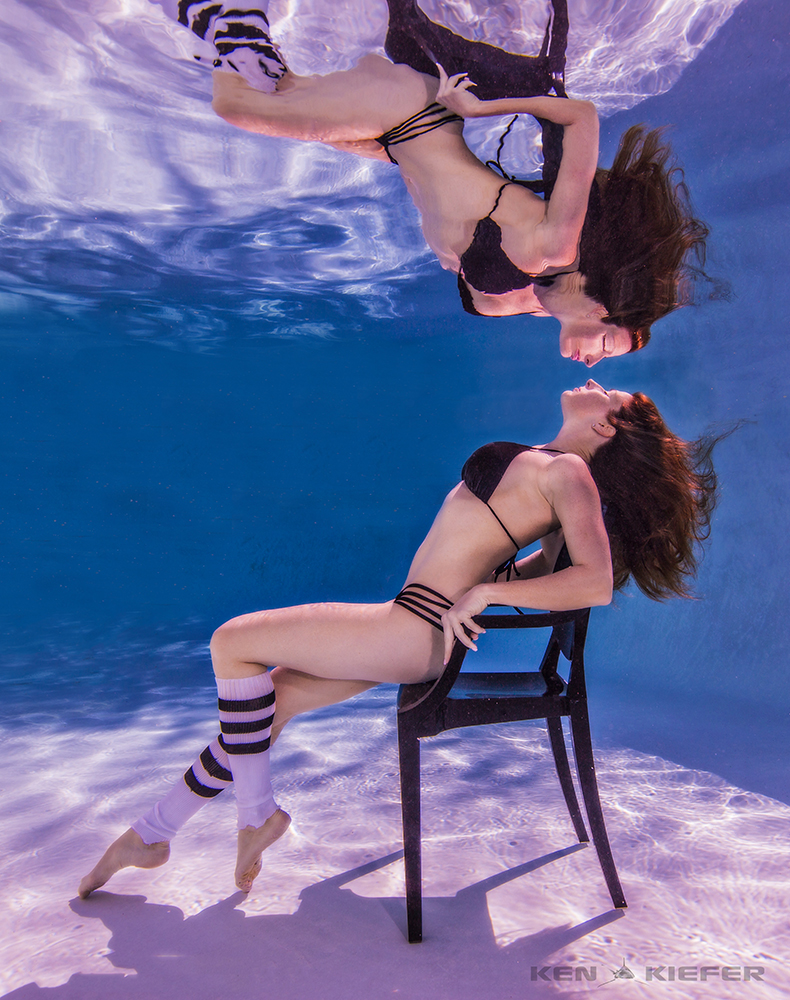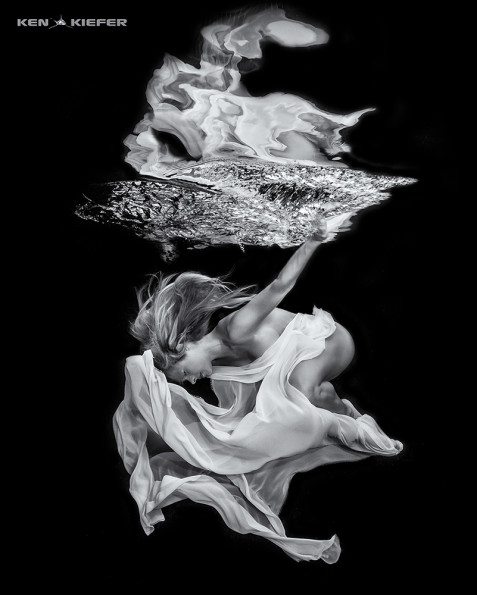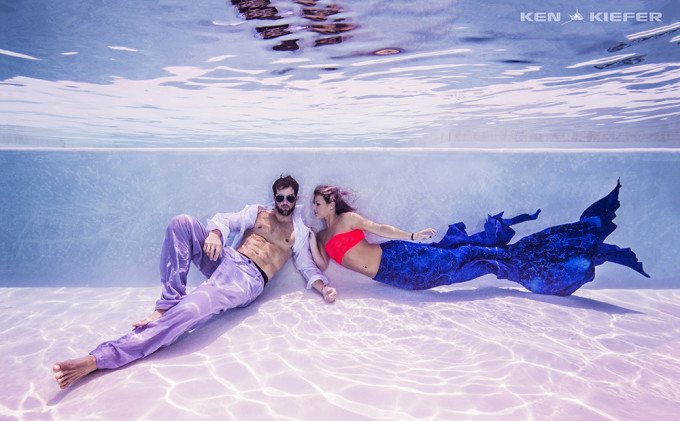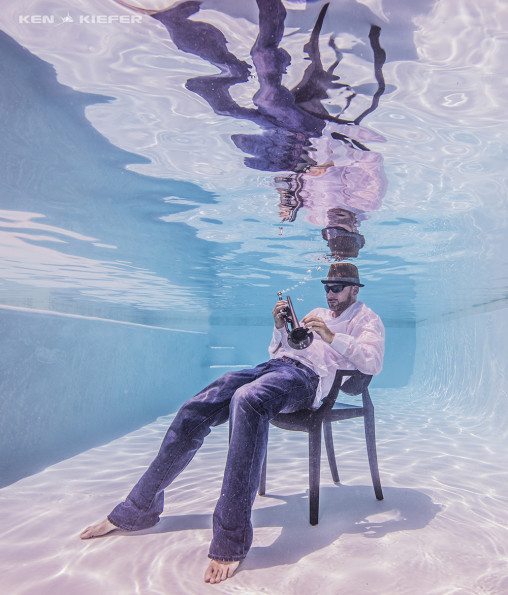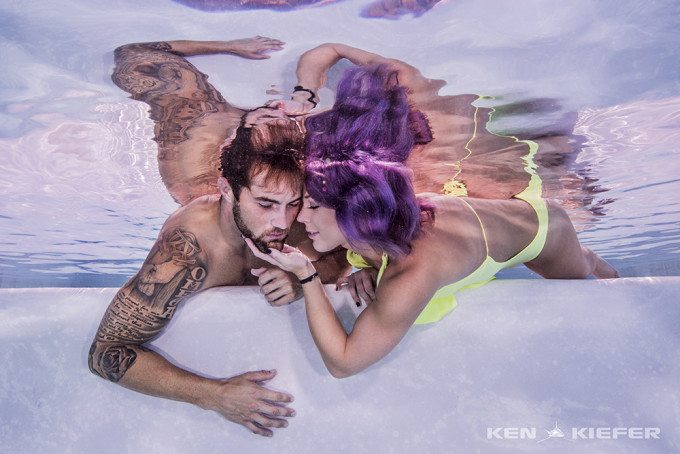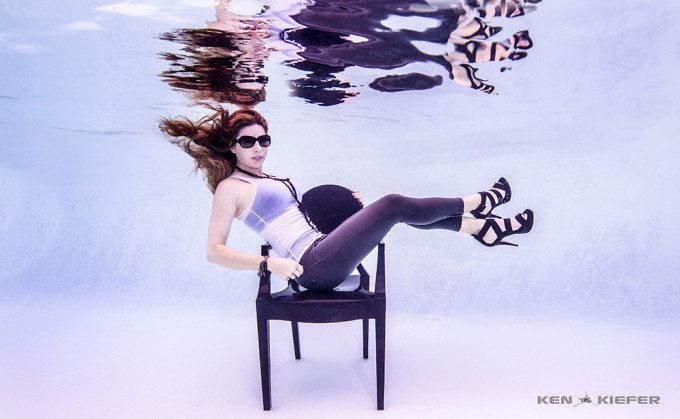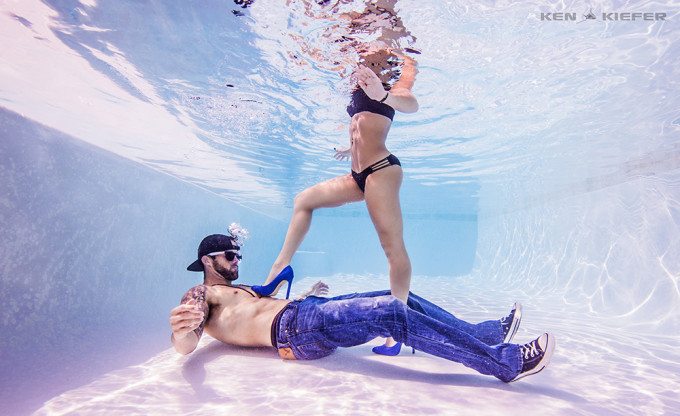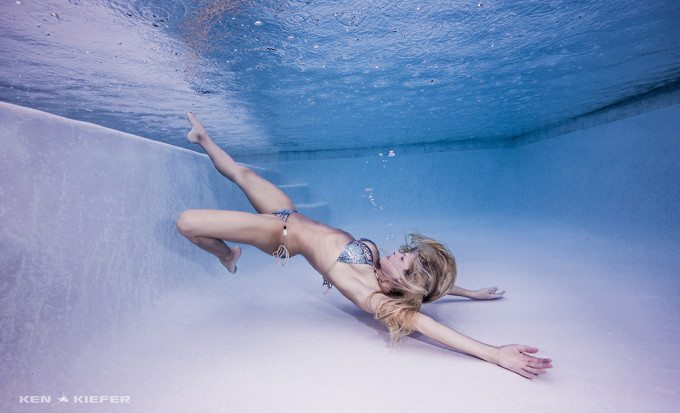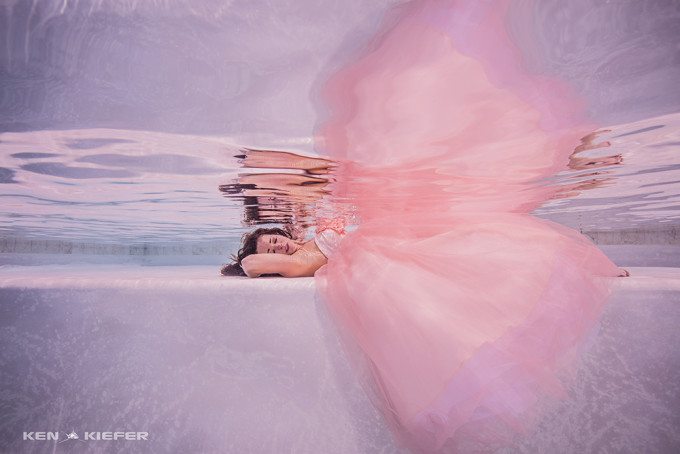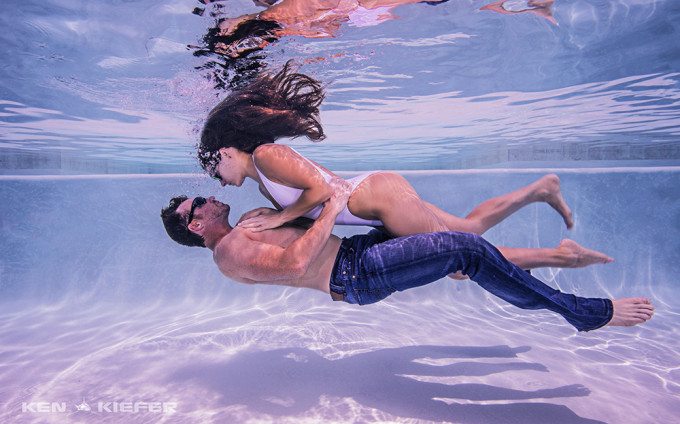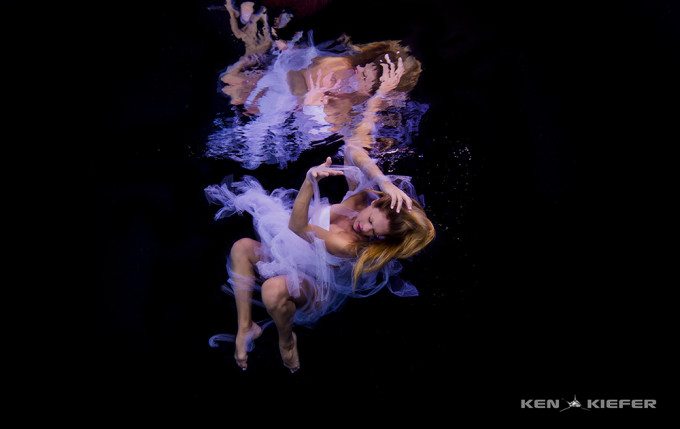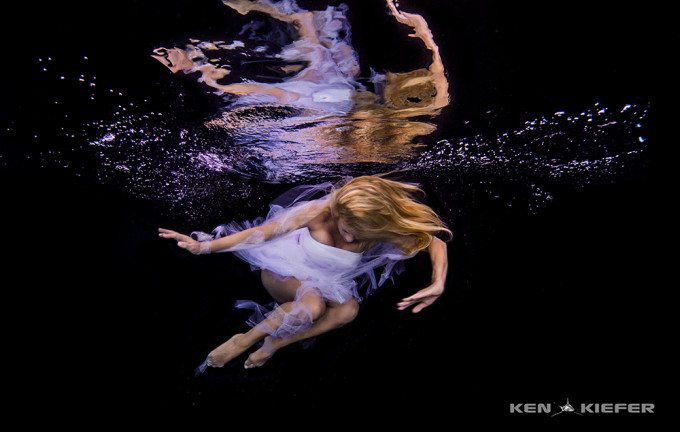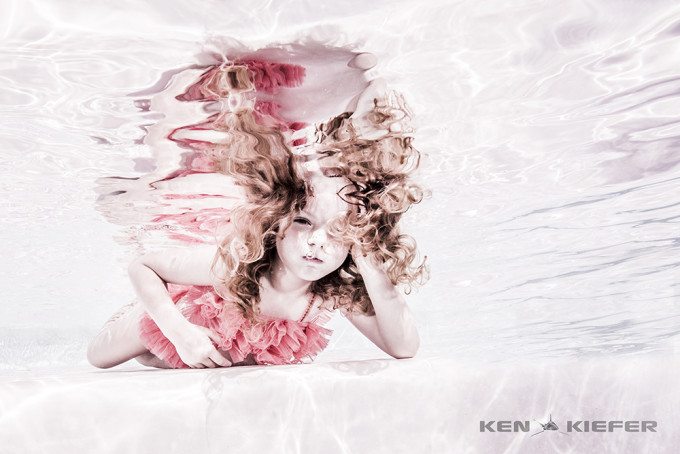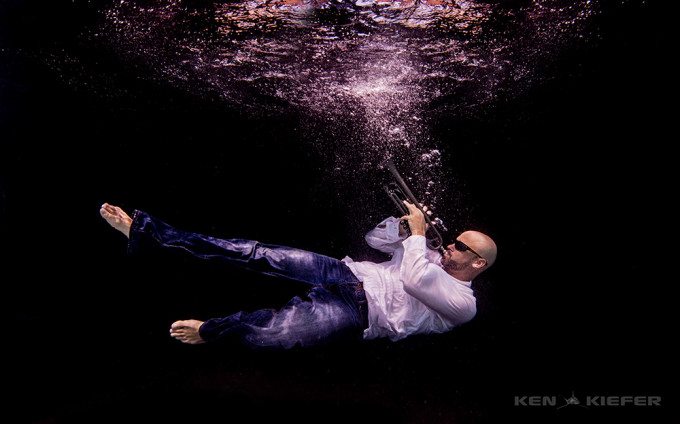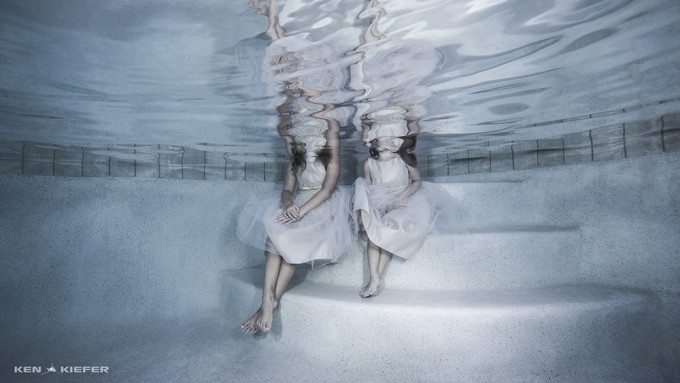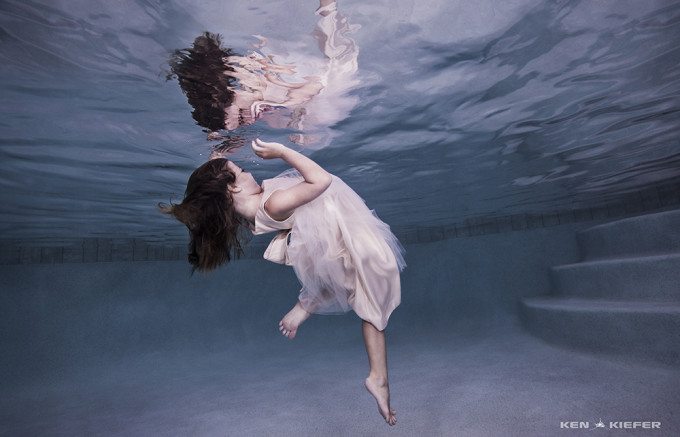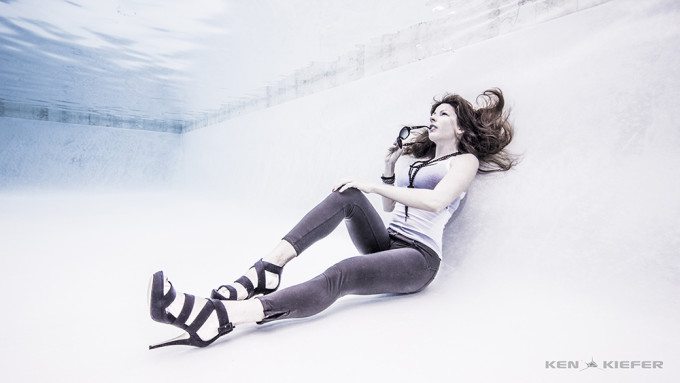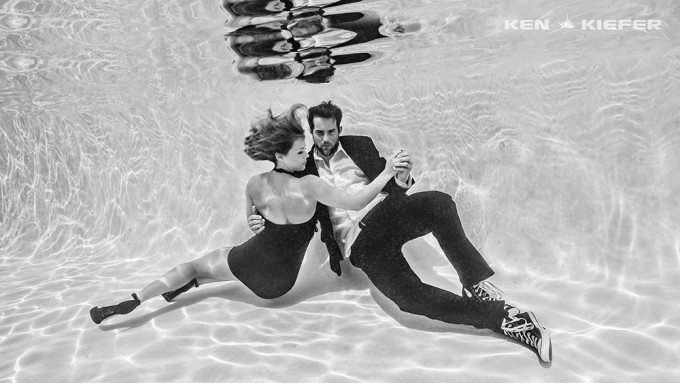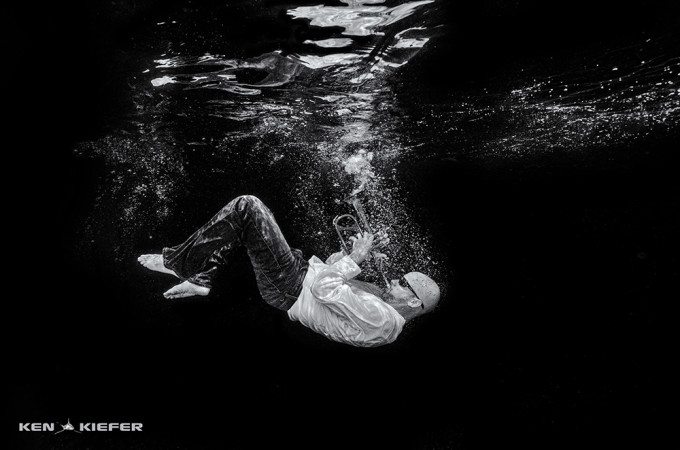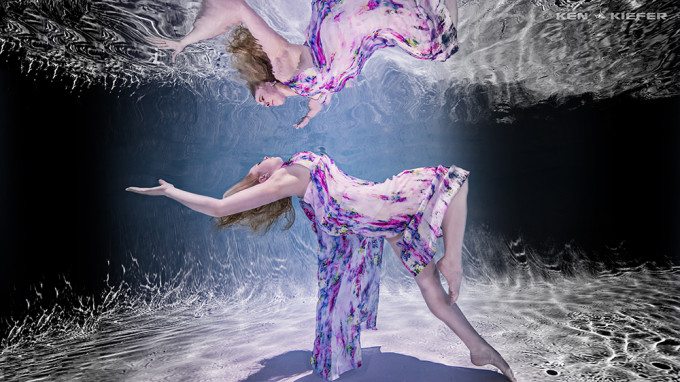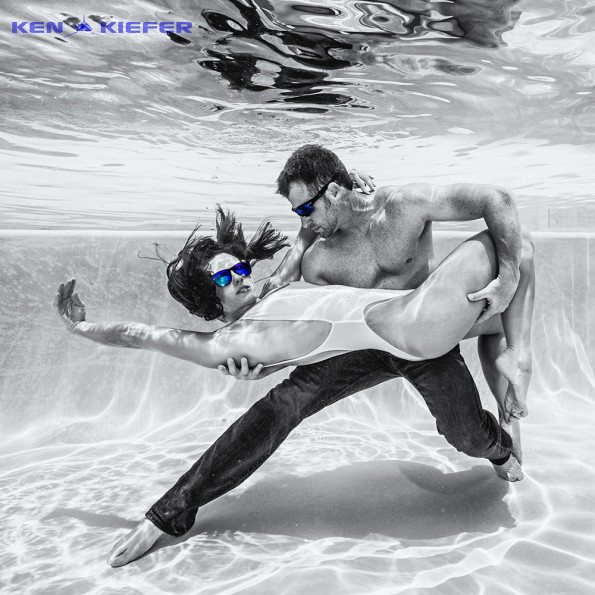All images by Ken Kiefer. Used with permission.
Photographer Ken Kiefer has an incredible speciality as a creative: not only is he an underwater photographer or a fashion photographer, but he specializes in underwater fashion photography. In fact, he’s won a number of awards for his work. Ken tells us that a few looks can take up to three hours and that the work is so complex due to lighting scenarios and getting exactly what he needs from the talent.
We talked to Ken more about underwater fashion.
Phoblographer: Talk to us about how you got into photography.
Ken: I have always loved capturing memories with pictures. I had done some sports, portrait and wedding photography, but never felt creative. When I added photography to one of my favorite activities, scuba diving, is when I became inspired. I was able to bring my view of the underwater world to show people who had not experienced it, and it felt amazing.
Phoblographer: What made you want to get into portraits? Specifically fashion portraiture underwater.
Ken: Underwater fashion shoots evolved from my desire to constantly practice and create. I started out shooting in swimming pools with swim team friends and lifeguards mainly as a way to test out my underwater photography gear and practice different techniques for shooting in the ocean. This grew into experimenting with my wife, who does some fitness modeling. We both loved the creativity and the ability to be unique. It’s also great practice for my other love, shooting large animals underwater.
Phoblographer: Doing this kind of stuff is very tricky. What was one of the biggest rookie mistakes you used to make and you eventually got over?
Ken: There are many possibilities for mistakes with underwater photography of any kind. The water creates challenges with lighting, depth of field and perception. The extensive gear required also provides more chance for equipment failure or error. Correctly lighting your subject to create the exact look that you are shooting for was the toughest hurdle for me. It took a great deal of practice to nail down the techniques that I needed.
Phoblographer: Let’s talk creativity: how do you go about concepting ideas, getting inspiration and explaining the ideas to the models? Is there storyboarding involved?
Ken: Inspiration for these types of shoots is an ongoing process. I’m lucky that my wife is as enthusiastic about the artistry as I am. We are constantly bouncing ideas off of each other and gathering inspiration from anything we encounter. Day-t0-day life, television, books, clothing, sports. We always say – “what if we tried this….” Explaining to the models is a two-way street; sometimes they have great ideas, and I’m willing to give almost anything a shot. I’ve never tried storyboards, we usually have my wife demonstrate positioning, or use my hands to try to visualize. I suppose if I could draw, storyboarding might save some time and effort.
Phoblographer: Tell us about the gear that you use.
Ken: I currently use a Canon 5Ds and 5D3 camera bodies and various wide angle lenses. My go to lenses are 16-35mm f4 L and 8-15mm fisheye depending on what I’m looking for.
The camera is housed in an Ikelite housing with an 8 inch dome.
I use Ikelite strobes as well. Usually a setup of 4 DS161 strobes. Two on the camera and two setup as slaves.
Phoblographer: How long do your shoots typically take and how much planning tends to go into them?
Ken: Generally a shoot with just a few looks and one model can be done in about 3 hours. I’m currently preparing for a 3-day shoot with 9 models and I will be in the water for 8-10 hours each of the 3 days. Quite a bit of planning is required with any underwater shoot, just in equipment alone. Lots of batteries to be charged, gear to clean and lubricate, and outfits and props to arrange.
Phoblographer: Lots of your images look like reflections. How do you create those? Are they done in Photoshop or in-camera?
Ken: The reflections in images are completely in-camera. It involves using available light combined with strobe placement and angles to get the look that I’m going for. Sometimes it will require absolutely no movement for a painful amount of time, and sometimes I’m wanting a rougher water surface to have a fractal appearance in the reflection.
Phoblographer: Where do you see your work one year from now? That is, where do you want to be and what’s a big goal that you’re trying to accomplish.
Ken: I honestly live completely in the moment, and I’m always focused intently on the very next activity or project. But, I want to keep pushing forward in all aspects of underwater photography. I’d love to find a company that wanted to back an extensive shoot involving big animals and models in an environmental conservation ad or something to combine various aspects of my work. I love doing fashion and fitness underwater pictures, but my heart will always be in the ocean with the critters.


